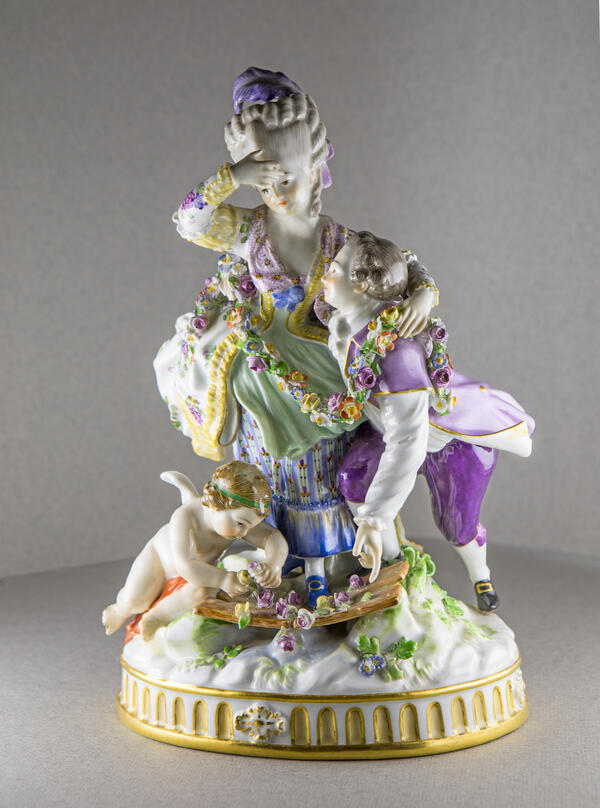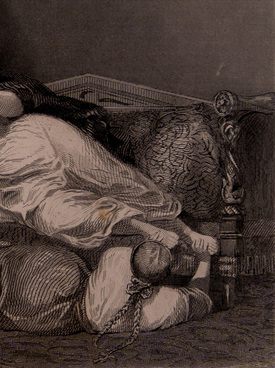The Meissen Porcelain Manufactory was founded in 1710 and named after the nearby town of Meissen in Upper Saxony. For a long time, it maintained the status of the leading enterprise in the production of genuine hard-paste porcelain.
The factory’s golden age that took place in the 18th century is associated with the sculptors Johann Joachim Kändler and Michel Victor Acier.
Johann Kändler created works in the spirit of Rococo — they were festive, colorful, and luxurious, often exploring the subject of court life. Kändler’s follower Michel Victor Acier set the direction of Neoclassicism in porcelain art, combining elements of the emerging Classicism and Rococo.
It was in the 18th century that the Meissen factory developed its recognizable style, compositions, and artistic motifs. In the 19th century, the factory faced a period of stagnation, and almost all products were created using the already recognized models of Acier and Kändler. This was when the displayed “Flower Girl” was manufactured in the style of Neoclassicism.
18th -century visual arts were dominated by the theme of love. In keeping with these trends, this figurine depicts a couple in love and a cupid. Michel Victor Acier was one of the first artists to use figures of angels and cupids in statues to enhance the emotional impact of a composition.
Meissen products of this time were characterized by precise details and floral motifs, which were influenced by the Dutch and German easel painting. In the bouquets, the artist depicted mainly roses, violets, and peony poppies.
In 1720, the factory started using the hot method
of painting: the paint was not applied to the product after firing but fused
directly into the glaze. With the help of this method, the original color of
the painting was preserved for a long time. Moreover, it helped to expand the
color palette which originally included only five colors. As a result, Meissen
porcelain reached the quality level of Chinese porcelain. The “Flower Girl” was
painted using around 30 color shades.



